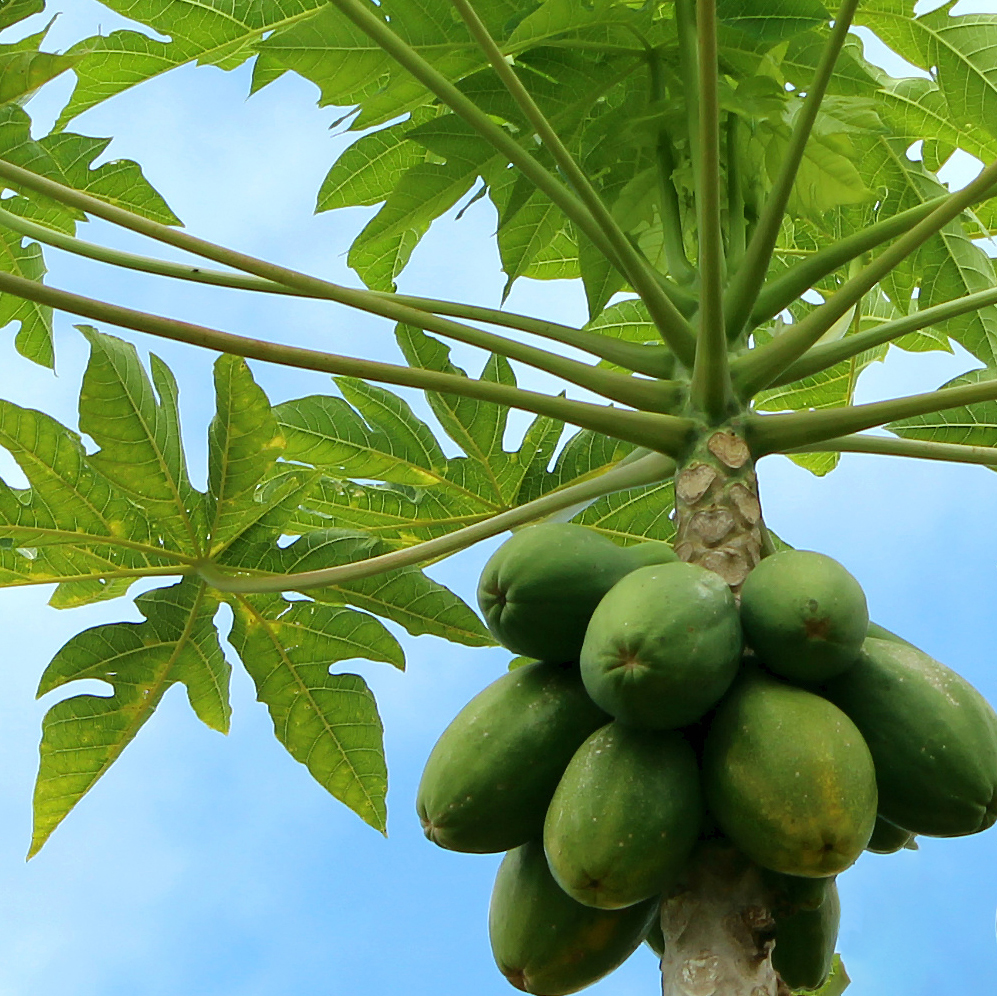
A favorite among tropical fruit, the papaya has flavorful orange-colored flesh that can be used in shakes, jams, and fresh fruit salads. This prolific tree produces several papayas during each season. The tree can grow up to 20 feet tall, depending on the variety and the environmental conditions. The plant prefers direct sunlight; it can take some dappled shade during the hottest parts of the day.
The papaya does best in well-drained sandy soils. Soil pH should range between 4.5 and 8. Water the plant deeply during the growing season to produce the best and sweetest fruit. Avoid planting the papaya in an area that collects water since it does not like having wet feet. Also, select a space in the landscape away from the home, buildings, and power lines as the plant can grow quite large. Fertilize the plant every other month with a complete fertilizer for fruiting tropicals.
Some of our favorites: Papaya carica
Note: These plants are grown for decorative purposes and are not intended for human or animal consumption.
FAST FACTS
Outstanding Features: Distinct flavorful fruit
 | Common Names | Papaya, pawpaw |  | Scientific Name | Carica Papaya |
 | Bloom colors | White |  | Light | Direct sun |
 | Water | Water deeply and thoroughly. Avoid having the plant sit in soaked soil for extended periods. |  | Size | Up to 20 feet depending on the variety |
 | Zone | Zone 10 and above, can survive in zone 9 with protection from freezes |  | Overwintering | In zones 8 or below, plant in a container and bring inside the home when temperatures drop below 45 degrees. Place in a bright sunny location and water as needed. |
 | Fertilizer | Feed every 2 months |  | Companion plants | Podocarpus, plumbago, sweet potato vine |